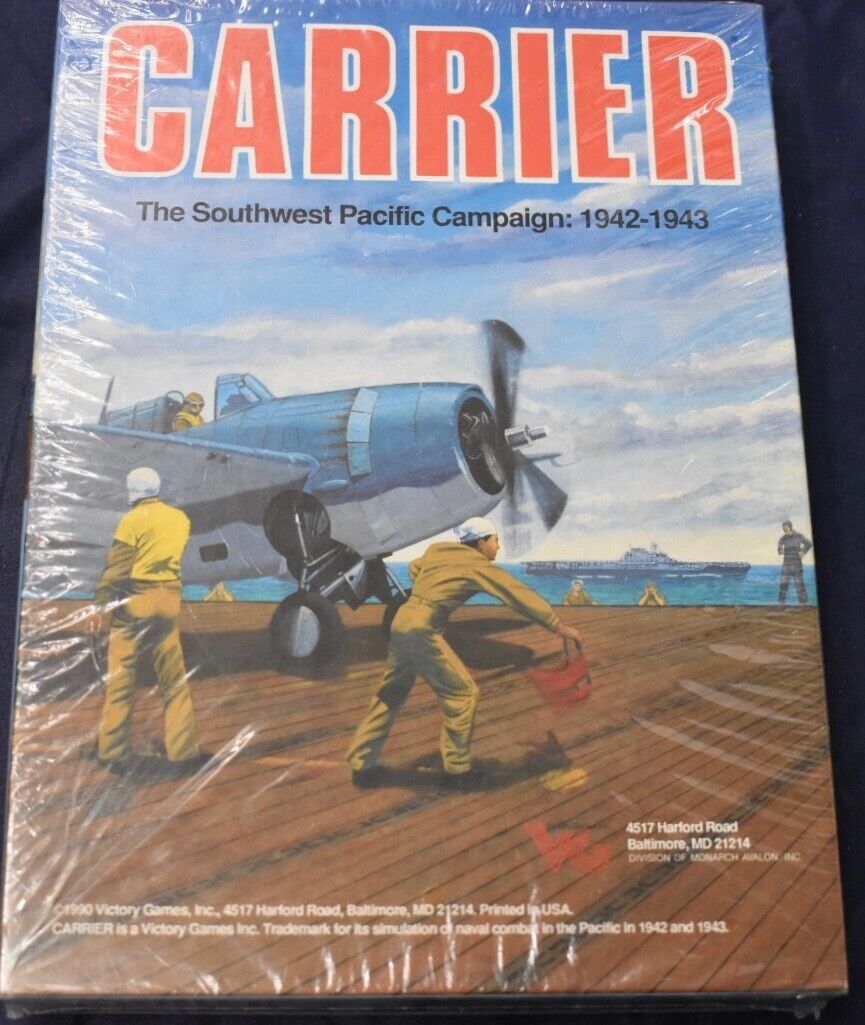Carrier: The Southwest Pacific Campaign – 1942-1943 (1990)
Carrier
Carrier is a solitaire wargame published in 1990 by Victory Games, a subsidiary of Avalon Hill. The game was designed by Jon Southard and uses a single-player rules system to simulate the World War II Pacific Theater. The player takes on the role of the commander of a US aircraft carrier, and the objective is to complete a series of missions while avoiding detection and destruction by the Japanese fleet.
Why is Carrier Popular?
Carrier is a popular game among wargamers due to its challenging Gameplay Mechanics of Carrier and historical accuracy. The game is significant because it allows players to experience the strategic decisions and challenges faced by real-life commanders during World War II.
Game Components of Carrier: The Southwest Pacific Campaign – 1942-1943
How To Setup Carrier: The Southwest Pacific Campaign – 1942-1943
Setup involves preparing the map, organizing the counters, and familiarizing oneself with the rules booklet. The game requires laying out the map, setting up the task forces, and initial placement of counters according to the scenario being played. The rules booklet provides detailed instructions for setup and gameplay.
Gameplay Mechanics and Game Objective
– Air searches to locate enemy carriers
– Task force maneuvering
– Simple mechanics for Japanese movement and attack timing
– Tactical decision-making once enemy forces are located.
Player Experience
Playing **Carrier: The Southwest Pacific Campaign – 1942-1943** is a tense and strategic experience. Players must navigate the uncertainties of naval warfare, making crucial decisions on task force deployment and air search operations. The game replicates the real-life tactical dilemmas faced by historical commanders, providing a challenging and immersive experience.
Pros
Cons
Personal Thoughts on Carrier: The Southwest Pacific Campaign – 1942-1943
This game is ideal for fans of historical warfare and solitaire wargaming. It offers a deep and challenging experience that mimics the strategic and tactical complexities of naval battles during World War II. It is particularly suited for players who enjoy detailed game mechanics and historical accuracy, but may not be the best fit for those new to wargaming or looking for a quick, simple game.
We are supported by our audience. When you purchase through links on our site, we may earn an affiliate commission, at no extra cost for you. Learn more.

